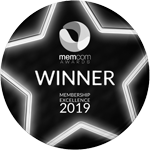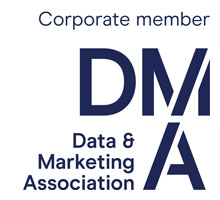Can customers tell you how to run your business?
Yonder Consulting – 6 June 2023
Source Yonder
The business benefits of moving from customer centric to customer driven strategy
Businesses talk a big game about customer needs, specifically the ways their particular products can meet those needs. We call this the “customer centric” approach which puts the customer “at the heart of everything a business does”. While this seems like a great strategy, it actually delivers a somewhat narrow outlook. Why? Because it reduces understanding of your customers to their relationship with your products alone. It dehumanises them, in a way.
So, what would happen if you flipped this round? Not seeing customers in terms of their relationship to you, but truly seeing yourself through the eyes of the customer. What does it mean to put your business right at the heart of everything your customer does instead?
Rather than bringing people on board with what you’re doing, how about inserting yourself into what they’re doing – or what they’re struggling to do – so you can find out how to help them better? When we view our target markets within the wider context of their lives, we also understand our business within that context – why we matter to them in the first place. When we delve into their goals, their dreams, their fears, observing how they live their lives, we can shape products and solutions that allow our business to serve them better on their terms. What’s more, we should be seeking this strategic insight, long before we develop any strategy.
Customer centric v customer driven
When a “customer centric” brand sets out to get customer feedback on a pre-existing product or service, it could also be testing the water with an offering that was created with only limited or even no audience insight. However great the idea might seem, the business remains driven by its own agenda of pushing a product out to market. But has it asked the more fundamental question – do customers actually want or need it in the first place – and why?
By contrast, a business that’s “customer driven” puts customers front and centre. It goes out to the market and gets to know its audiences before it even thinks about developing a product or service, let alone pushing one out there. To do this, it must understand its potential customers as people, rather than consumers alone – only then can it meaningfully seek their input in shaping a business strategy that paves the way for long-term success.
Reactive insight v proactive insight
The difference between these approaches lies primarily in the balance of focus of your insight gathering exercise and the motivation that drives it. When a business just seeks input on a proposition or its marketing messages, for example, it aims to make refinements and minimise risk. While risk minimisation is important, on its own it brings dangers.
Have you asked whether your brand is focusing too heavily on existing products and customers in looking for growth? And even if you expand your horizons to test different markets, are you limiting yourself only to input on the same offering, rather than seeking understanding of what customers – and potential customers – are really looking for? Focusing solely on this kind of reactive approach limits the potential of customer insight, rendering it tactical by taking what”s “yours” out there and trying to insert into places it might not fit.
On the other hand, businesses that go out and engage deeply with potential customers as part of the initial development of their brand, product or service proposition actually maximise potential (rather than just minimising risk). That’s because, when you explore deeply how customers (and crucially also non-customers) navigate their daily lives, if you listen right and watch carefully you’ll find they are also telling you about your business strategy at the same time. And once you have this window onto their world, you can put yourself right at the heart of it, which encapsulates so much more than simply asking what customers want. It’s a total inversion of the customer-centric approach.
Insight plus imagination = innovation
Game-changing innovators like Henry Ford or Steve Jobs delivered exactly what audiences didn’t even know they wanted, but now can’t live without. By designing a car versus a “faster horse”, for example, which is what people might have said they wanted, Ford instead delivered the desired outcome – a faster and more comfortable way to get from A to B. This level of success doesn”t just require innovation or imagination, but deep, proactive insight too. The kind that delves into customer beliefs, behaviours, hopes and aspirations.
It’s true – customers usually can’t tell you what they want. And they almost certainly can’t tell you what your business should do about it. But when you understand what customers are trying to achieve in their lives, where they are struggling and what drives their decision making, you can take this insight and, using your expertise, knowledge and scale, you can create winning solutions that drive growth for your business. And these don’t have to be purely functional solutions – such as delivering something faster and more comfortable. Even greater value is delivered where you find ways to tend to emotional needs as well, like enhancing satisfaction, confidence, and quality of life.
Say, you sell fast broadband, so what? A lot of companies sell the same. And while customers will tell you they want a faster, more reliable wi-fi connection at a lower price when working from home, what they may really care about is improving their performance in the big meetings and getting the promotion they deserve. So, yes, you may have developed a technical product, but the way you sell it tells a different story – and it’s the one customers want to hear.
The upshot of all this is not to look at your business through the lens of what you’re selling but through the eyes of your customer. If you put what’s important to them ahead of what you think is important for your business, and allow your imagination to take over, customers will begin to drive your business and ultimately, if you let them, drive your success.
Get the latest MRS news
Our newsletters cover the latest MRS events, policy updates and research news.















